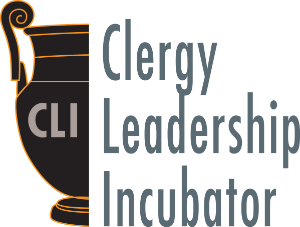Re-Thinking Synagogue Dues
 In the summer of 2007, we carried our Czech Memorial Trust Torahs from the Congregational church that had hosted us for ten years and celebrated a glorious shehechiyanu moment in our beautiful synagogue home perched on a hill overlooking the lush San Ramon Valley. We added a lovely pre-school wing and expected to grow and flourish. Little did we know that the subprime mortgage crisis was about to hit the country like an economic tsunami and many people in our community would lose their jobs and some could no longer afford living in our upscale suburb.
In the summer of 2007, we carried our Czech Memorial Trust Torahs from the Congregational church that had hosted us for ten years and celebrated a glorious shehechiyanu moment in our beautiful synagogue home perched on a hill overlooking the lush San Ramon Valley. We added a lovely pre-school wing and expected to grow and flourish. Little did we know that the subprime mortgage crisis was about to hit the country like an economic tsunami and many people in our community would lose their jobs and some could no longer afford living in our upscale suburb.
We lost scores of members who could no longer pay synagogue dues and watched as the percentage of remaining members on “dues subsidy” skyrocketed from a little over ten percent to more than a third of the congregation. Our financial reserves disappeared before our eyes. While some thought we should count our blessings that we had gotten our new synagogue home built just in time, our people with financial acumen were crunching the numbers and couldn’t figure out how we were going to survive since all of the financial models had been built on an assumption of continued growth. Instead we were experiencing a precipitous decline in membership. They saw our significant debt as an albatross that we might never be able to shed.
So many in our community had dug deep to contribute to our capital campaign but, given the new economic reality, were now in no position to provide the level of funding that we needed. No matter what dynamic new initiative we tried — whether riding the national wave of the STAR Synaplex program or home grown programmatic efforts such as “Judaism in 3-D” – it was hard to counteract the dispiritedness that seemed to grip our community.
Previously, innovative ritual, tefillah and joyous music filled our holy space and our members were eager to bring friends and neighbors through our doors. But something had shifted, and for the worse. Fewer people seemed to feel good about being part of our community and there seemed to be more complaints. During a long overdue sabbatical, I did a lot of thinking and reading and had long talks with colleagues who seemed to be encountering similar challenges in their work.
In 2013, we began having small group meetings with significant portions of the community and checking in with people as deeply as we could. We did a lot of research and discovered that there were a handful of synagogues around the country that were making novel attempts at re-visioning congregational life. We read Finding A Spiritual Home by Sid Schwarz and the sociological insights of Steven Cohen. Ron Wolfson’s entreaty to move from transactional to relational Judaism resonated with our leadership group. We began to talk about all sorts of synagogue experiments taking place including one outlined in an article entitled, Scrapping Synagogue Dues: A Case Study by Dan Judson.
We decided that we needed to redefine our relationship with the people in our community. With the full support of the Board I stood on the bimah on Kol Nidre of 2013 and spoke about sacred relationships and redefining the synagogue based on shared passions and connections to meaning. Finally I said: “Friends, our Board of Directors has had the courage to decide that you can no longer join Beth Chaim Congregation by writing a check and filling out a form. There will be no mandatory dues. You are going to decide what you are able to contribute. We will ask you what your commitment will be to this community and we will joyfully try to respond to your needs.”
The initial response was disbelief, mixed with panic. Veteran members called me and the lay leadership to emergency meetings. They were certain that we had just destroyed the synagogue. We tried to calm the fears but the best remedy was the influx of new people that had heard about our new policy. Rather than coming to Beth Chaim to take advantage of the lack of mandatory dues, they were eager to identify their passions and commit to being engaged in ways that were meaningful to them and to the community.
We invited people to declare those ways that participation in the community would be genuinely meaningful for them. What emerged was a covenantal document, a brit, that we called our “Engagement Commitment.” We started to track these self-declared areas of passion and commitment and members would receive an email with the words “Engagement Commitment” from the synagogue whenever we were offering a service, learning opportunity, or gathering that coincided with their interests. Members knew that when they received this notice, we were simply confirming an opportunity that they had declared would be meaningful for them.
This process was not just for new members. Everyone in the community was invited to a private meeting to discern and declare his or her Engagement Commitment. This has led to a steady stream of members of the congregation who come in to meet with me to discuss their interests are and who leave having created a customized Engagement Commitment. While this has represented an enormous commitment of time on my part it is impossible to overstate the value the meetings have had. I emerge with a better understanding of the interests and needs of my congregants and, in turn, they emerge having had private time with their rabbi and feeling that the congregation is really here to meet their needs.
While it is certainly too early to draw any conclusions about this process, the synagogue leadership is greatly heartened to note the growth in membership every month since we announced our new plan. While dues are no longer mandatory, we did send out a letter inviting our members to pledge what they felt comfortable contributing. Since there were numerous requests to inform our community what the sustaining amount might be, we did include this information as well. Here are some revealing numbers early in this process:
• 91% of households have responded to the pledge letter;
• Relative to the Sustaining Amount, approximately 45% pledged an amount greater than or equal to it;
• Relative to their 2013 dues payments, approximately 88% have pledged the same amount or more in 2014;
According to other case studies of the few synagogues in the country that have moved to a “no dues” policy, on average (according to Dan Judson of Hebrew College), congregations that have tried similar models experienced a 1% to 4% decline in revenues in the first year of implementation. Subsequent years’ revenues increased because of new memberships together with growing familiarity with how the program worked. So far, due to the generosity of members who have stepped up and contributed significantly more than the sustaining amount, we are about 4% ahead of our revenues at this time last year.
Although we did not ask, many of the congregants who pledged less than their 2013 dues amount went out of their way to explain the reason, usually due to a negative job change or a major health or family issue. A number of our Board leaders have also been personally approached by congregants who are grateful and enthusiastic about the new model of financial contribution. The congregational Board is delighted not to have to invest so much time and energy in trying to collect dues (especially from people who are encountering financial challenges), and that body is now able to focus on more constructive organizational challenges.
Perhaps our biggest accomplishment is having countered the very harmful perception that synagogue membership is primarily about money. Even more exciting is that people are talking about their Engagement Commitment with each other. There is an energy in our community that we haven’t experienced in years. Attendance at events is now seen as an expression of the life commitments of our members.
We are really only at the beginning of this exciting experiment and there is much work to be done to support this approach to building a more connected, engaged Jewish community. When one of my rabbinic colleagues found out that I was planning to have one-to-one meetings with everyone in the community, he asked me where I found the time. My answer was simple. I said, “I can’t think of anything more important that I would rather be doing.
The greatest hope of this process is that people will take a greater responsibility for their own spiritual lives. It involves a conceptual shift in congregational organizational culture from “top down” to “bottom up”. Our congregation and its program is now guided by what our members really want and with what gives them meaning. It has given our congregation a new sense of purpose and excitement.
Editor’s Note: For a fuller treatment of the “free will dues” experiment going on in congregations, please click here: URJ-When Jews Choose their Dues
Rabbi Dan Goldblatt has been the spiritual leader of Beth Chaim Congregation in Danville, California for more than two decades. He has just completed a term as President of OHALAH, the Jewish Renewal Rabbinic Association and served as an International Vice-Chair of Rabbis for Women of the Wall. He is assembling the first cohort for a Sacred Storytelling training program and is readying for publication a book, Miracles Happen: Stories That Break Open the Heart.


Beth Tzedec, and other synagogues, are examining if ending membership dues for people under 40 makes a difference – Travel News
July 19, 2023 @ 4:10 am
[…] “Rather than coming to Beth Chaim to take advantage of the lack of mandatory dues, they were eager to identify their passions and commit to being engaged in ways that were meaningful to them and to the community,” Dan Goldblatt, the rabbi at Beth Chaim, wrote in a blog post about the transition. […]